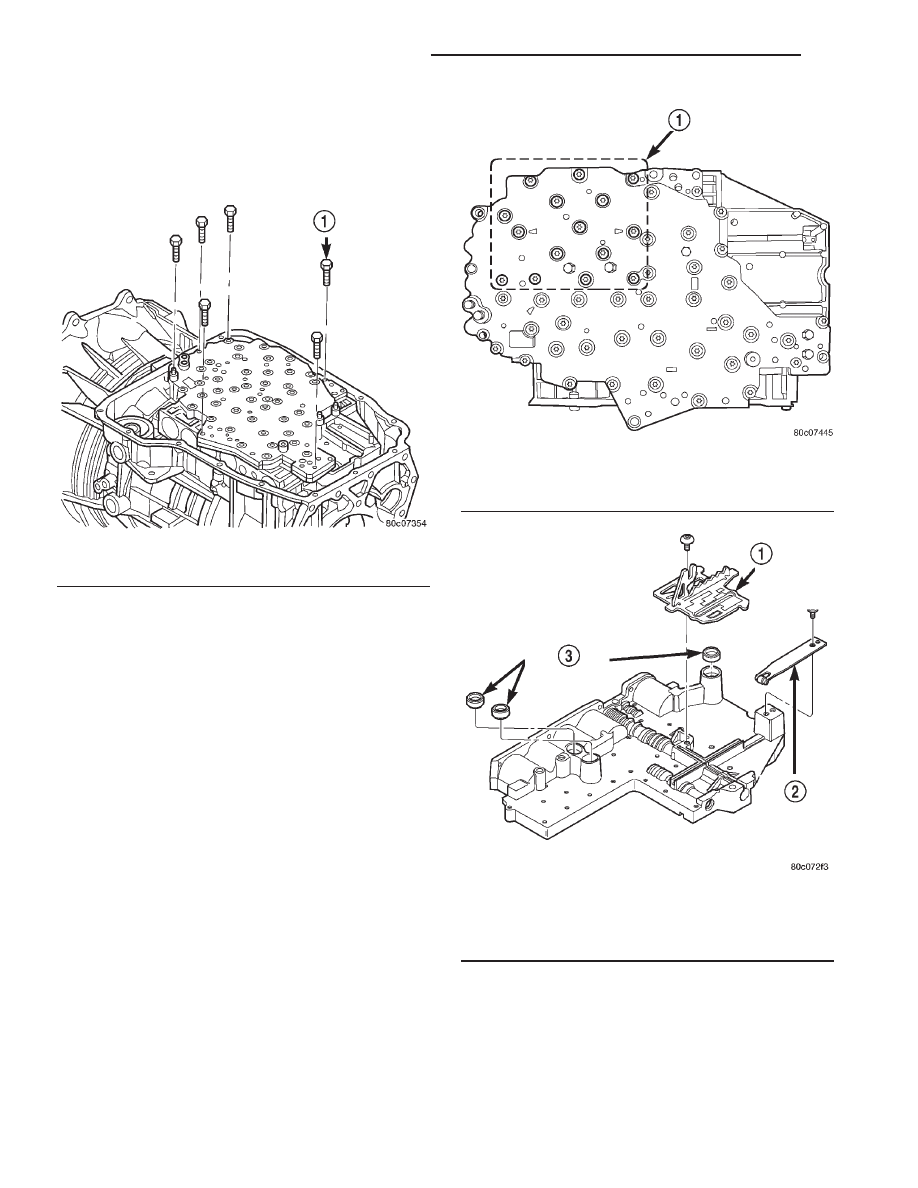Dodge Dakota (R1). Manual - part 722

(7) Remove bolts attaching valve body to transmis-
sion case (Fig. 122).
(8) Lower the valve body and work the electrical
connector out of transmission case.
(9) Separate the valve body from the transmission.
DISASSEMBLY
(1) Remove the screws holding the solenoid and
pressure switch assembly to the valve body (Fig.
123). Do not remove the screws on the top of the sole-
noid and pressure switch assembly.
(2) Separate the solenoid and pressure switch
assembly from the valve body.
(3) Remove the screw holding the detent spring
(Fig. 124) onto the valve body.
(4) Remove the detent spring from the valve body.
(5) Remove the TRS selector plate from the valve
body and the manual valve.
(6) Remove the clutch passage seals from the valve
body, if necessary.
Fig. 122 Valve Body Bolts
1 - VALVE BODY TO CASE BOLT (6)
Fig. 123 Solenoid and Pressure Switch Assembly
Screws
1 - SOLENOID PACK BOLTS (15)
Fig. 124 Valve Body External Components
1 - TRS SELECTOR PLATE
2 - DETENT SPRING
3 - CLUTCH PASSAGE SEALS
21 - 532
AUTOMATIC TRANSMISSION - 45RFE
AN
VALVE BODY (Continued)